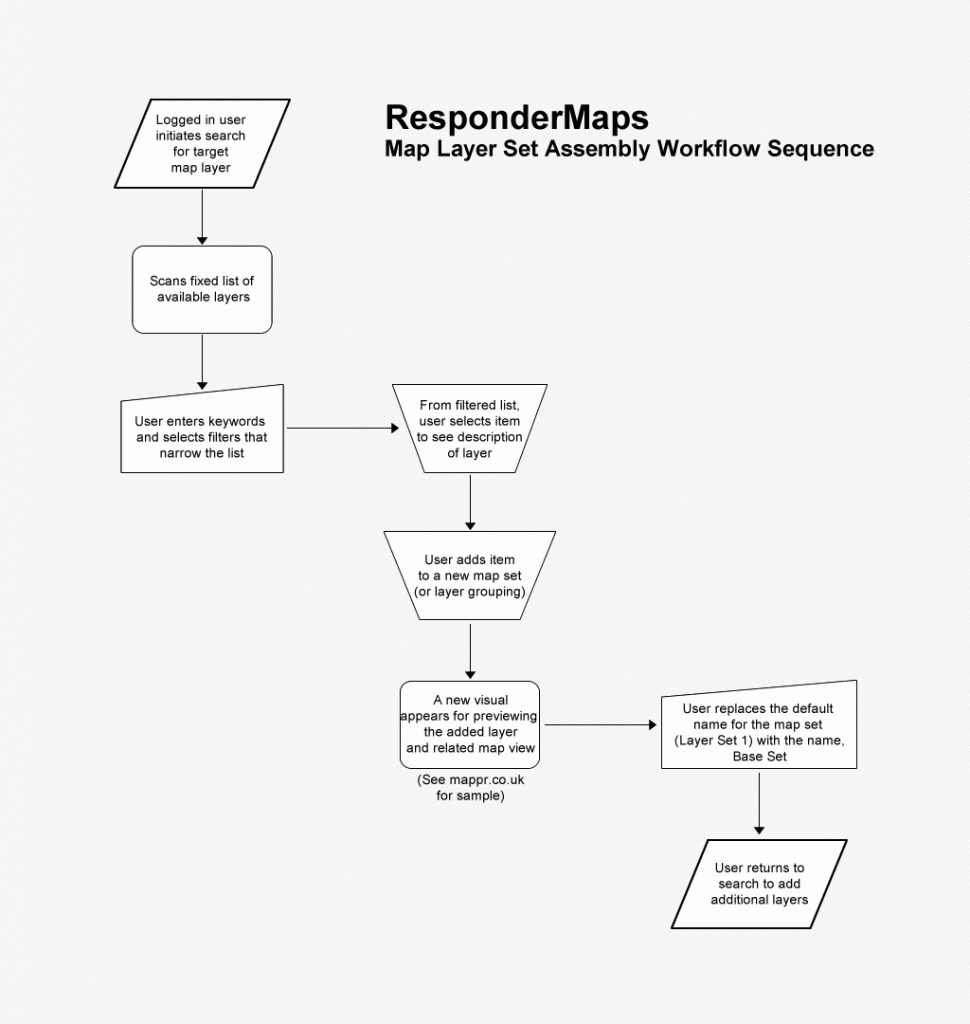Accomplished
Efforts to understand stakeholder/user goals and needs continued in Week 3. Documents reviewed included user personas developed for MapMixers.org (an earlier incarnation of Responder Maps.) These personas (and related scenarios) described the backgrounds, goals, and needs of information specialists working with first responders to improve situation awareness, pre- and post-incident planning and analysis, and reporting.
This information helped frame discussions I joined at the DMI plenary (hosted by CMU) where local software entrepreneur/firefighter, Cal Blake, introduced a small but diverse group to FieldApps.net. Attended by active firefighters, community leaders, technologists, and emergency response officials, the plenary discussion touched on various issues relating to Common Operating Picture services including Responder Maps. The specific app demonstrated by Cal displayed features including standpipes, water mains, power lines, and boundaries, all mapped to topology in a specific response area (Stanford’s campus). He also described functionality supporting data annotations and contributions from users. (Later, Cal and another Palo Alto firefighter described to me the binder maps stations keep to record details specific to oft-visited structures.)
Cal acknowledged issues relating to data provenance and validation, providing a useful entry point to discuss Responder Maps. As currently constituted, Responder Maps is positioned to serve as an exchange for map layer data, serving as a “translator,” normalizing and integrating data from numerous sources. Once established, the data layers catalogued/hosted by Responder Maps will be available to power a variety of map viewers and applications (in addition to the map layer mashup viewer hosted at ResponderMaps.org.) (This ecosystem is analogous to another area I’ve explored a bit, data as a service or DaaS.)
Together, these topics, as well as matters relating to data schemas and mapping standards, yielded useful areas of inquiry to raise as outside organizations are engaged to explore data partnerships.
Challenges
As Responder Maps evolves into an enabling service/platform, requirements gathering specific to data provider partners has come into focus (exposed by the growth of numerous map viewers built by organizations and unaffiliated developers and the proliferation of location-based datasets.) Exploring and exposing valuable datasets requires outreach informed by and focused on the goals and needs of end users, e.g., first responders. To facilitate this agenda, I’ve produced a short video treatment demonstrating the use of Responder Maps by firefighters in the field. Once we validate the script with professional contacts and produce the video, we plan to share it with outside parties to spark discussion of the Responder Maps vision and the need for sample data (as well as related functional and business requirements) to iterate and improve the service.
Goals
Finish production of the short demo video (with end user input) to communicate vision and engage partners in requirements gathering, product design, and development. For additional context, note that I have separately posted another blog entry containing artifacts and deliverables sequenced by delivery date. Status updates to the underlying Google Doc will be made on a weekly basis.








